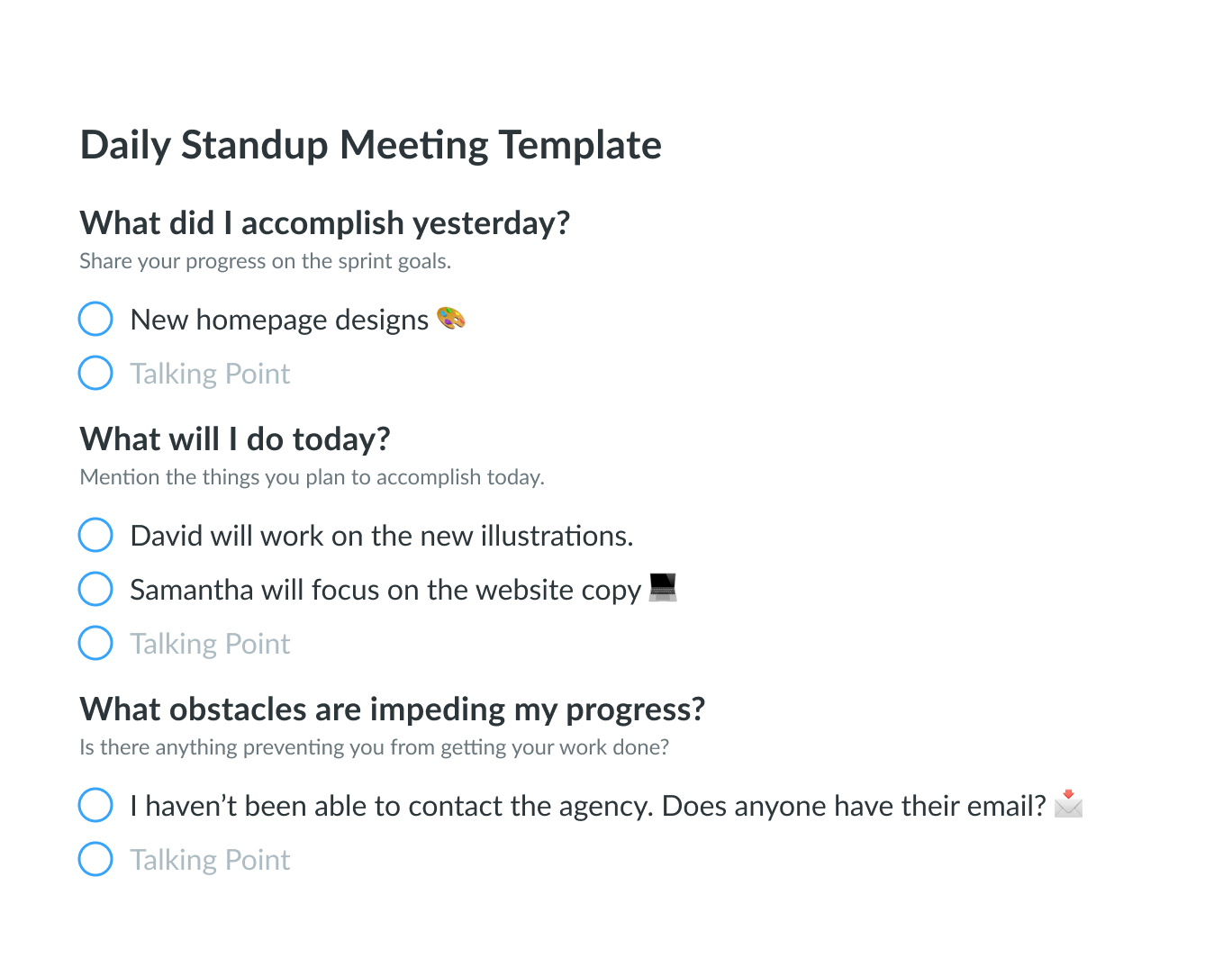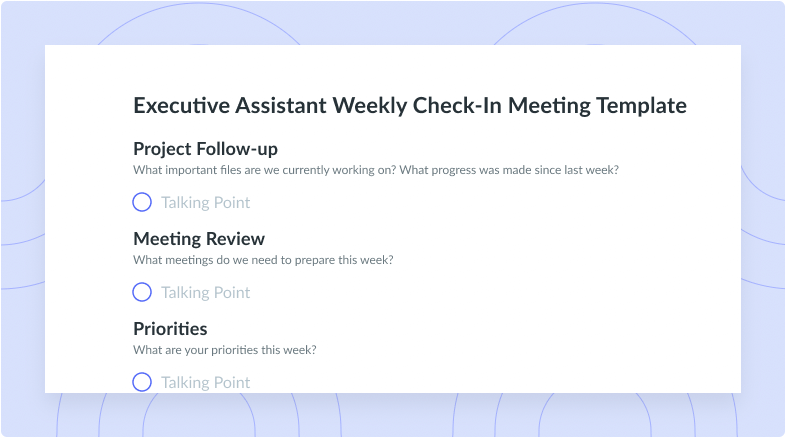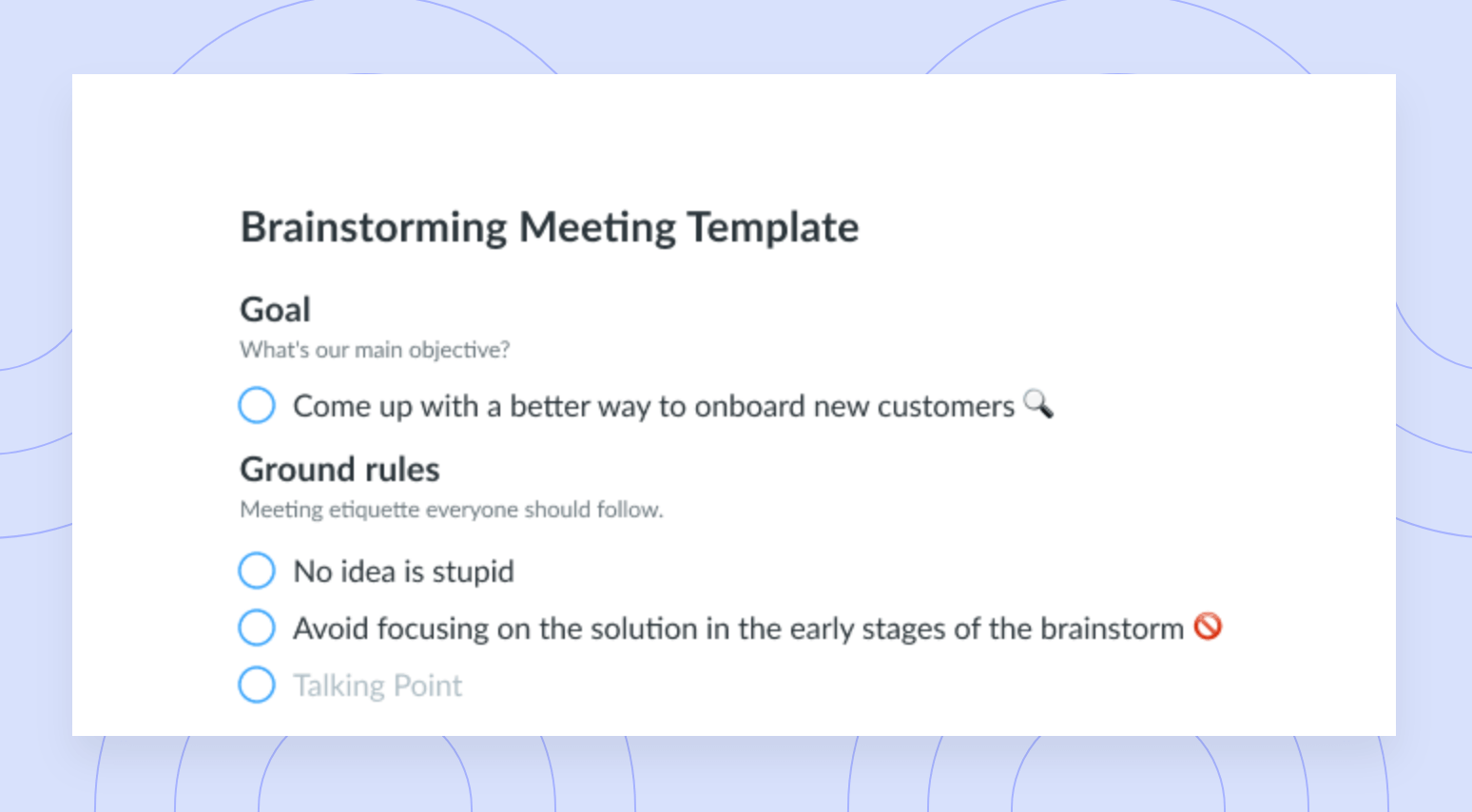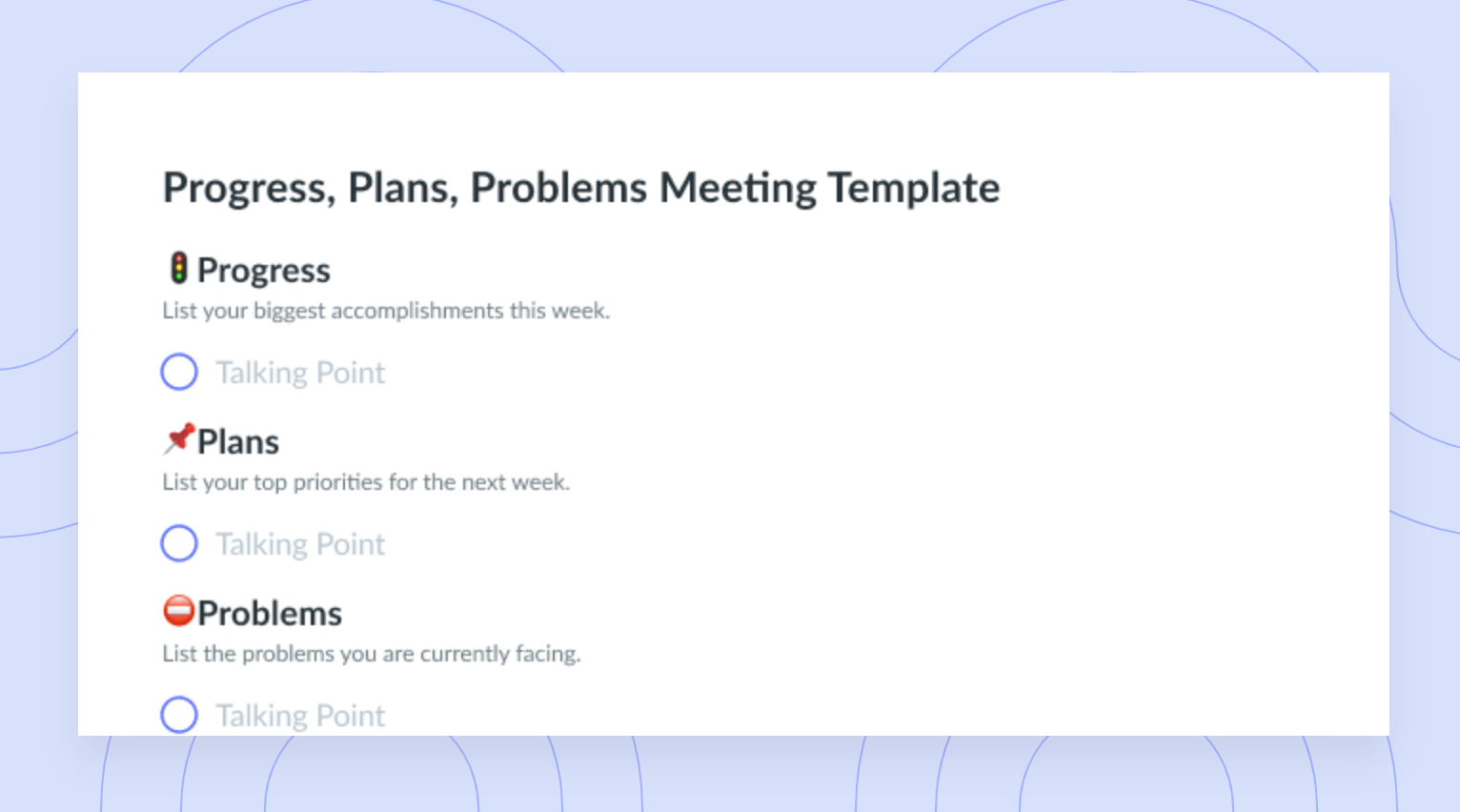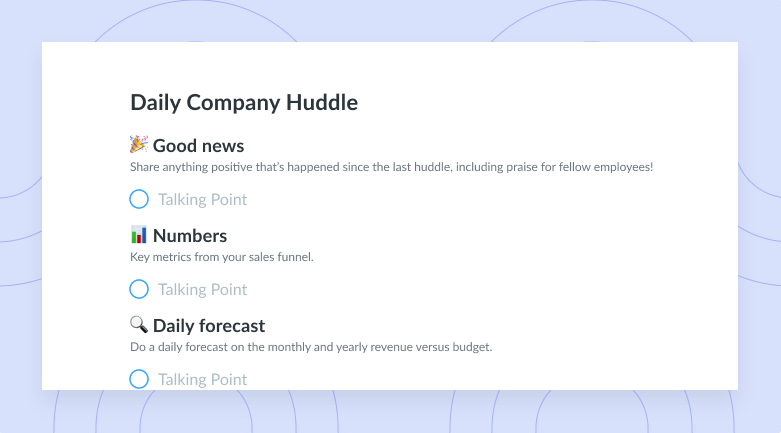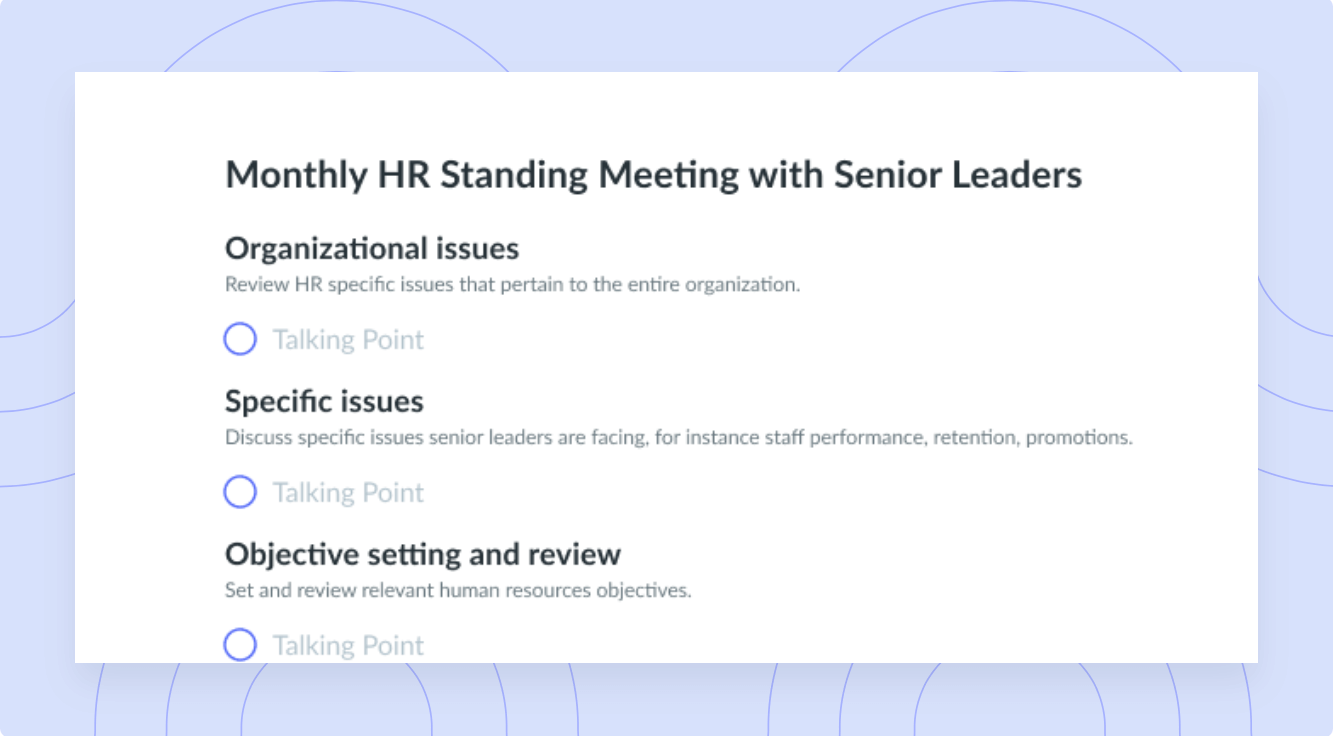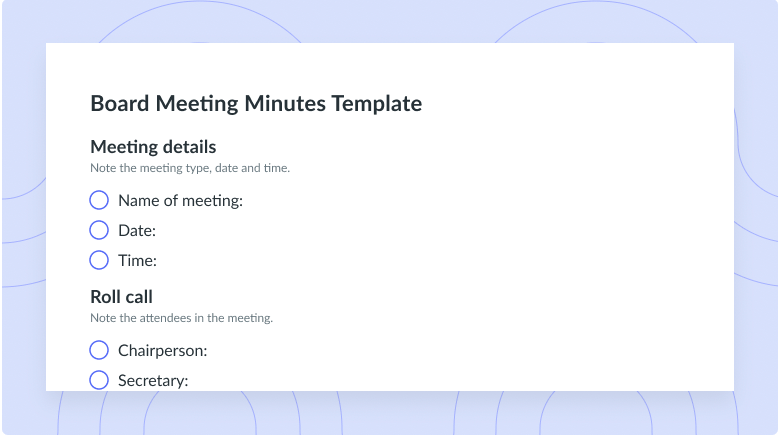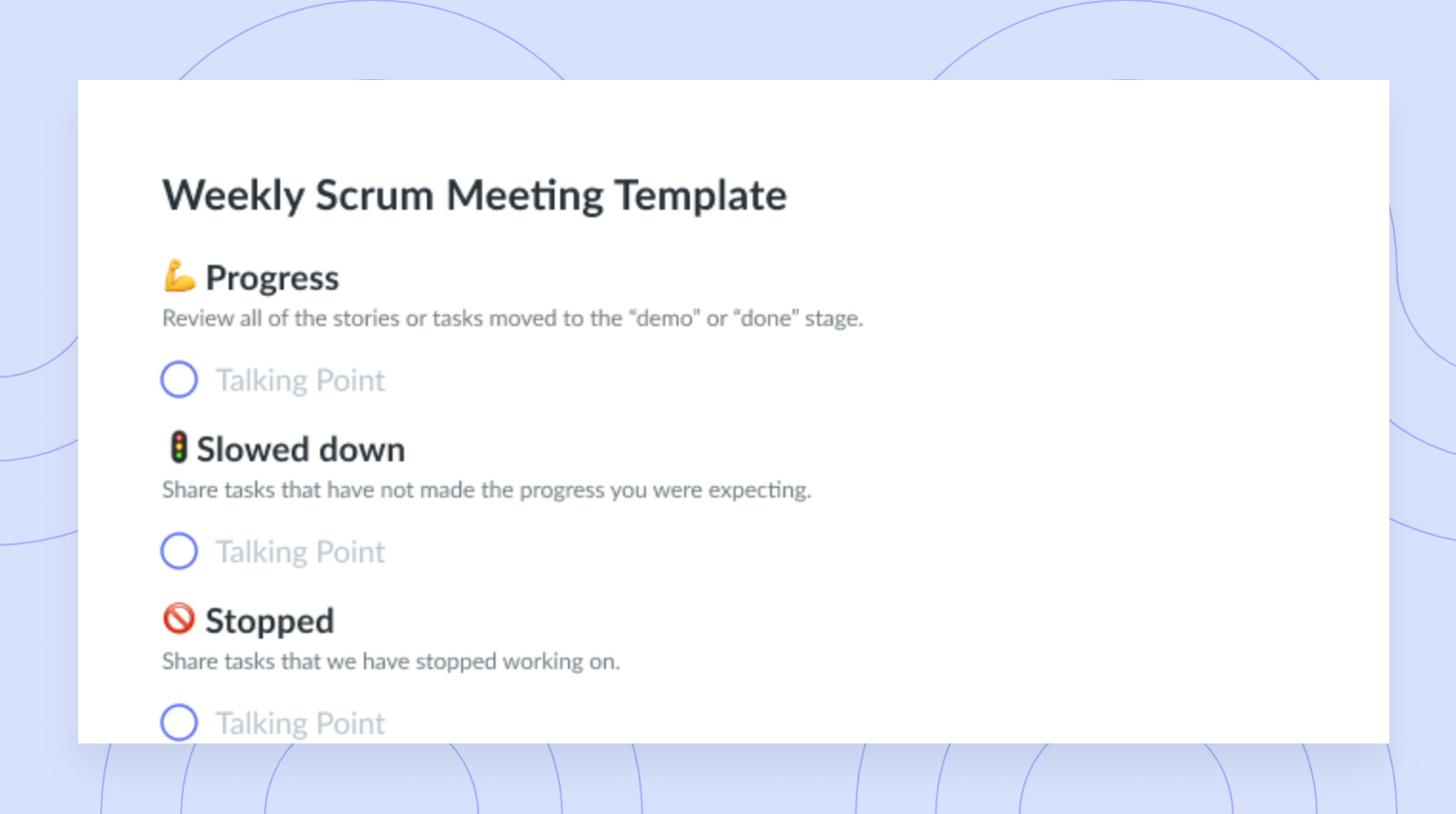
Effective Daily Standup Meeting Template
Get this templateKeep your team aligned with our Daily Standup Meeting Template. Ideal for team and department leads, this template helps teams share updates, identify roadblocks, and track progress so that everyone is on the same page. Use this template in Fellow to collaborate on the agenda, prompt input, and share the agenda afterwards.


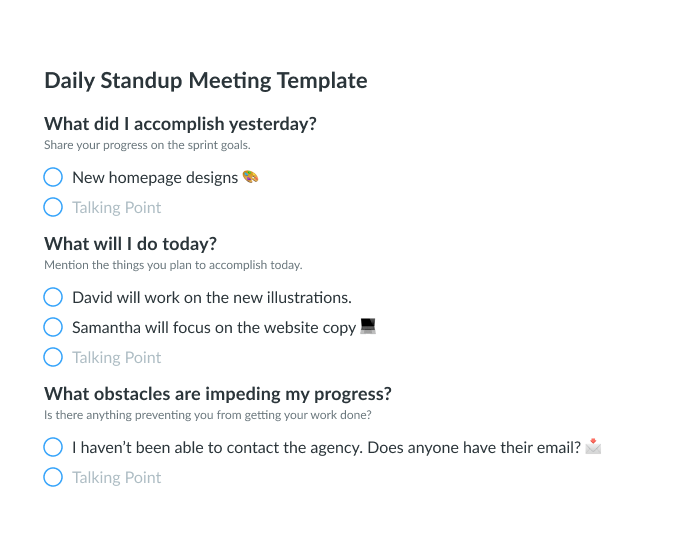

Daily Standup Agenda Meeting Overview
“Alone we can do so little; together we can do so much.” – Helen Keller
Daily standup meetings are standard practice for many companies, providing the 15 to 20 minutes needed to catch up and plan the following 24-hour period. Daily standup meetings generally ask three questions:
- What did you do yesterday?
- What are your plans for today?
- Is there anything blocking your progress that we (management and leaders) can help with?
While these questions seem relatively straightforward, it helps to put the entire team on the same page regarding what tasks are still waiting for completion and whether or not the plans for today change based on the results of the day before. Daily standup meetings ask the team to develop a clear picture of whether or not they’re on track. Also, daily standups give team members a chance to help each other out by identifying frustrating or reoccurring roadblocks.
Daily Standup meetings are often held per department, as it rarely makes sense to ask an entire company (unless very small) to come together for a 15-minute morning meeting. Many benefits can come from a daily standup meeting, but meeting leaders should take care not to misalign the goals of the meeting or keep them too lengthy.
Daily standup meetings are not for problem-solving so much as they are for identifying the problems. Also, it’s crucial to hold your appointment at a time that works for everyone on the team and allows them to tune in virtually if they want.
Your entire team needs to show up and leave a daily standup together. The daily standup is a teamwork exercise as it is a daily update, and leaders should treat it as such. Ensure that you announce that only one person should speak at a time and share concise updates to keep the meeting on track while providing beneficial guidance and current information.
How to Run an Effective Daily Standup Meeting
A daily standup meeting template is essential to running an effective daily standup meeting and keeping your team on track. Avoid any status updates turning into a lengthy discussion, or your standup meeting is turning into an actual meeting! You can cut in politely and ask to put the topic on hold until you can further dissect it afterward.
The daily standup meeting is called a “standup” meeting for a reason. It should be quick, and you should hold it where attendees can stand to encourage everyone to move it along. If people show up virtually, ask them to stand up at home. The idea is that nobody likes to stand for long periods, which is debatable but, alas, an excellent way to keep meetings brief.
Consider having incentives and deterrents for showing up on time to the daily standup. Implement a speaking coin that will encourage team members to speak until they’re finished without others cutting in.
Pay close attention to the times you’re holding your meeting. Is it difficult for people to show up in the morning? Are you struggling with low focus during afternoon meetings? The meeting time has to work for your entire team, and it may take a while to establish the best route.
Regardless of when you hold your meeting, ensure your team knows that it will be a daily occurrence and ask them to come prepared. If it helps, send out a copy of the daily stand up meeting template to fill in their answers.
What’s inside this Daily Standup Meeting Template:
“It is literally true that you can succeed best and quickest by helping others to succeed.” – Napolean Hill
1 What did I do yesterday?
Go around the room and ask every team member to tell you what they accomplished yesterday. Regardless of the size or importance of the task, ask them to talk about it to understand better how they work and which tasks they prefer to do first. If you find that a particular team member leaves essential operations to the last minute, you can address them accordingly.
You aren’t only asking your team members what they did yesterday but getting a general idea of performance and work preferences at the same time. Also, it lets all team members see where each person is in the group project process.
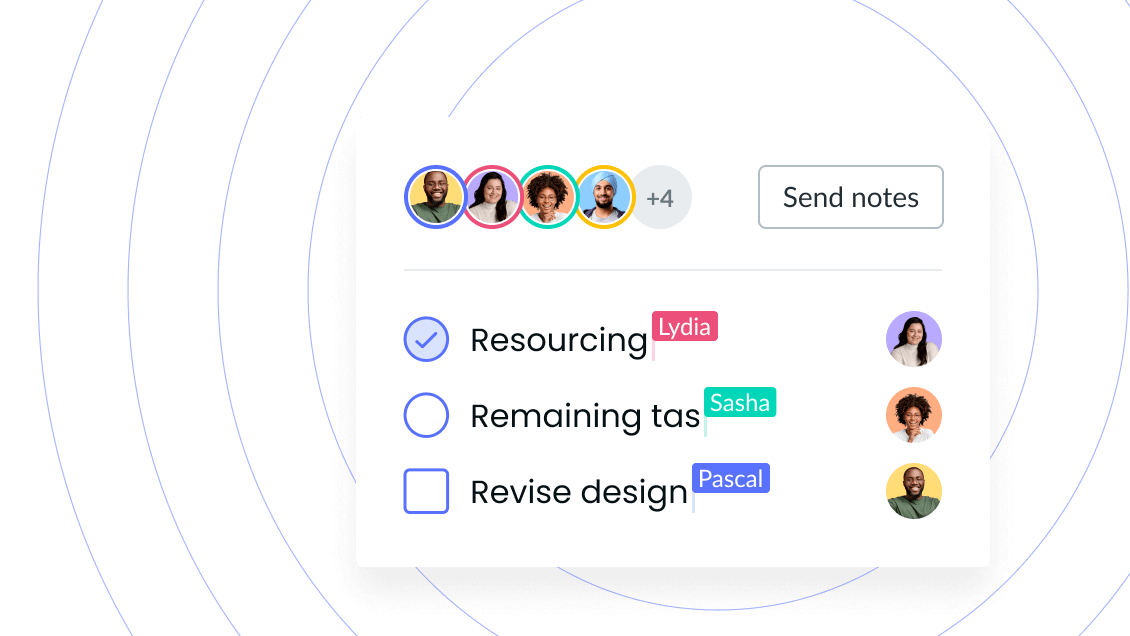
2 What did I do today?
If you hold your meetings at the end of the day, have your team update you regarding what they did today to build off yesterday and set them up for tomorrow. If you have your meetings in the morning, ask them what their plans are for the day and what they hope to accomplish by the E.O.D.
3 What obstacles/blockers are impeding my progress?
Obstacles are where people can get long-winded but remind them that they can pinpoint the problem now and solve it later, likely with your help and the help of their fellow team members. Progress blockers need to come into the light for a project to move forward, and when this is done daily, it tends to lead to faster completion and happier teams.

